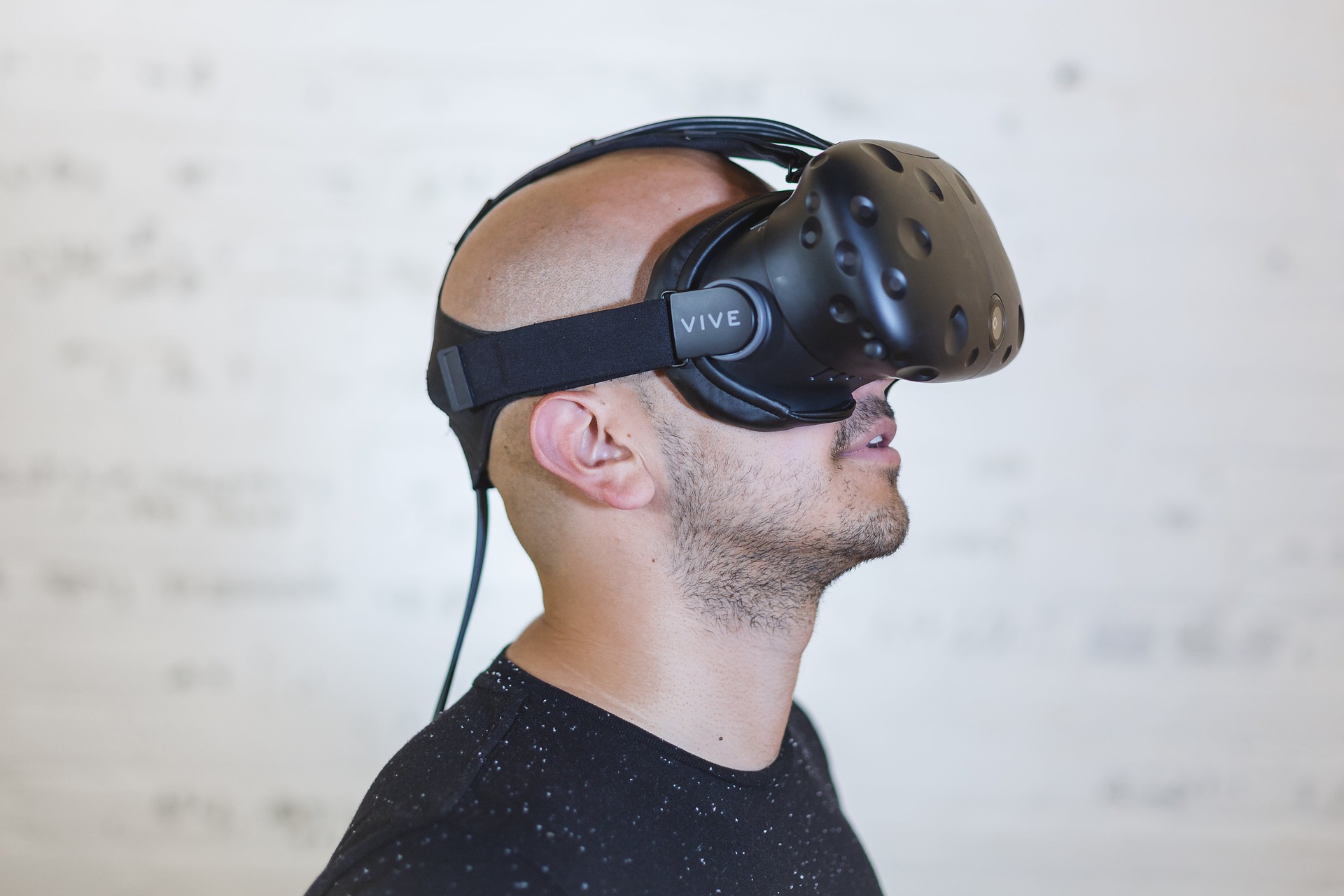Whether it’s people sharing their experience working with VR devices or news about personal assistant wars between Cortana and Siri, it seems that an increasing number of companies are entering the VR game. After all, it was just a week ago that Apple debuted its new VR-enabled iMac Pro.
But where is this hype and craze about alternative realities coming from?
The common point between AR and VR is reality. They both try to provide us with a different angle of reality. And why is that alternative reality even necessary? No, it’s not just for fun or to distract us from boredom. People have actually been doing this from centuries ago. They painted on lascaux cave walls, wrote novels and poems, held performances.
Later on, photography and cinematography were all added to the list of ventures that created alternative realities, helping to conjure up that which did not exist in reality and depict a world we desire and have curiosites about. In a way, they replace the existing reality for a short period or, at least, for the duration of time the consumer (reader of a book or watcher of a movie) is consuming them. As the word ‘consumption’ denotes, the relationship between that alternative reality and the person who ‘consumes’ it is a one way relationship.
The Evolution of AR, AI and VR in web design
An author whips up for you a piece of alternative reality and you consume it. In the last decades, there have been more focused efforts to change this one-way consumption model into a more interactive and productive way of communication with an alternative reality. For example, we have created performance art to replace classic theater performances and become part of the performance. Likewise, we have created computer games that let us interact with the alternative world someone has created or create our own reality with them from scratch.
AR and VR are the latest and yet the best efforts towards this same purpose. Not only can they provide an alternative world from the ground up, they also enable you to mix the dominant reality and alternative realities—and that’s what makes them special. AI is also one integral part of the computers helping us build and interact with our own alternative realities. In fact that’s how computers come to us with realities tailored to each and everyone of us not with a solutions built for masses of people.
How can AR, AI and VR in web design affect my conversions?
Think about if your customers could simply aim their phone at your store or cafe and see your food menu or list of goods with some special discounts to those who use their phone right there to place an order. Or in your not very wild imagination, think about a scenario where your customers could see how a tattoo design would look on their wrist before even setting foot in your tattoo shop.
Here is where artificial intelligence take over; you scan your clothes with your phone and your personal assistant can search every tattoo shop available in your area and make suggestions that match your preferences and quirky style. Take it one step further and imagine if your personal assistant was actually able to design a tattoo based on the knowledge it’s acquired from you about your style and preferences. This is a simple example of how AI, AR and VR in web design can be put into use for ordinary needs we all deal with every day of our lives.
How can AI, AI and VR revolutionize the world of web design and development?
Before answering this, I need to mention the long lasting debate between those who believe that when technology has gone far enough in reaching such milestones and advancements, web design as an industry and career will be dead. I’ll refrain from explaining at length the approaches of this debate here as it’s beyond the scope of this article. Though when I consider my personal take on this issue, while I can understand and respect the points made on all sides, my own experience tends to resonate mostly with those who believe web design as an industry, profession and career and, more importantly art, will not die but rather adapt itself to such technological advancements and ultimately evolve into something completely different than what it is today. That’s for another article though. For now, let’s go a bit deeper into the imagination and see how these three tools can help us as web designers accomplish more than we’ve ever imagined in the not so very far future.
This is how AR, AI & VR can play out in web design
Okay picture this scenario. You take a snapshot of a product with your phone and then are actually about to see a mockup of that on your eCommerce website’s Black Friday sale page. Then you put on your VR headset and ask your website assistant to help you with the first steps in building your website based on the mockup you just put together. But you’re not quite decided yet so you ask it to show you some more variations to choose from. After you’re asked a couple of questions to the assistant, different website layout choices appear in front of you.
You pick one and your assistant creates a first version of your homepage by content gathered from your existing old website, social media accounts, Wikipedia page, reviews about your business or product in other websites and everything that somehow relates to your business. At this point 50% of the job to make the corner stone of your website is done and from here you gain a more manual control if you want and do the final touches as you like. Then, there you go—your first homepage is ready!
Such a blissful setting is actually not too far off since part of it is already possible now! For example, website builders like Grid ‘intelligently’ (as they call it) build you a website based on the knowledge they acquire through their wizard. The results, however, may not be what you expect though it’s still an important step for a business that’s solely founded on a feature that has never existed in the web design market.
What’s the future of AR, AI and VR in web design?
What seems out of reach for now would be a piece of technology that gives us both AR and VR in one place. For example, imagine you’re wearing a glass—of course better than the demised Google Glass 😉 and you look at your product which is just a few steps away from being located in your online store, but you just don’t like the angle of the photo taken by your glass. So you start to move and rotate the object in different axes until you get your favorite angle. You voice the title of the product outloud and then take the product back to the glass’ camera so that the printed specification will be scanned and added to your online product parameters. Now you set the price with your finger by swiping up and down and that’s it. Your product is uploaded and available for sale in your store.
And yes, all that object rotation and price adjustment part was happening in thin air with just your fingers! You’re literally just sitting there without any surface, board or pad and you’re able to just move your hands and make adjustments! Apparently such an awesome gadget needs the combination of AR and VR which to my humble knowledge has not yet been built and if you’re into sci-fi as much as I am then you can add some AI magic to this as well. For example, imagine if after you have uploaded your product to your online store, your web design assistant came up with a campaign and proposed to promote your product based on specific factors like your product specifications, price and other factors.
It would provide for you a rough draft for a newsletter, create a campaign in Google Ads for specific keywords and create a special landing page for that campaign that would offer the visitors an exclusive discount. It could also suggest for you to put a banner in your homepage targeted towards the specific demographic that has been found to be the most potentially interested in your product based on their previous searches and activity on your website. In fact, the best help that AI can offer to the future of web design wouldn’t necessarily be helping you design your website but more significantly helping you mine, collect and analyze data from your website. This would be a huge asset for web designers and digital marketing experts to better understand clients’ customers interests, product performance, page performance, and ad performance.
Bringing to life the imagined unimaginable
This technological utopia (or dystopia—I’m not sure!) is not far away from us as many of its integral parts are already present and working in limited scales. There is an emerging craze for VR and all of the major players in the computer and game industry are entering the competition to seize bigger shares in its market. Developments for AR and first commercial products based on that have been there even before VR hit the market. Also, AI has actually been here for a while; it’s just that we haven’t been able to fully discover it. These three will form the future of technology or, at least, a very big part of it.
And to be frank—I think any market or industry that plans to survive this emerging era must embrace it or face an inevitable death; likewise for web design, web designers and website builders. For those of us who still think web design is a browser parsing HTML codes, this is an alert to wake up! The future of mainstream web design will be ruled by the artificial intelligence that help people make websites, promote it and expand it. Our mission is to work with it hand in hand and put its power into good use.







No comment yet, add your voice below!